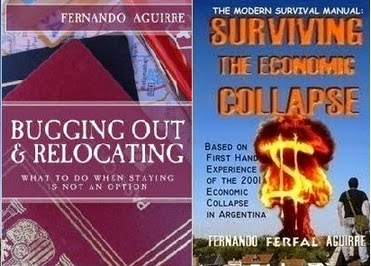One
of the first recommendations I made when first writing about urban
survival was how great headlamps are. Though they are more commonly used
for hiking, climbing and cave exploration, the ability to have both
hands free makes a big difference. Even though “tactical” lights have
their place and a small LED light can be invaluable, one thing I learned
from my years of irregular electrical power supply was that when the
lights go out frequently you just have to get on with your life in spite
of it. This means preparing food, washing the dishes, cleaning,
working, fixing stuff, and while a bigger and more powerful flood lamp
can come in handy, a headlamp that puts light exactly where you want it
simply works better and is more efficient in terms of batteries.
Petzl Tikka Plus 2


Petzl E97 PM Tikka Plus 2 Headlamp, Mystic Gray
These days we see tons of “tactical” flashlights, some better than others, most of them made in China, with acceptable standards of quality though nothing to brag about.
Petzl on the other hand is a company that mostly makes climbing and cave exploration gear. The thing about climbing equipment is that if it fails, you die. Its that simple. If your Petzl harness comes apart, its bye-bye. If your Petzl headlamp fails while climbing down a cave you’re done. Because of this, Petzl is a company used to high technical standards. This reflects in the quality fo their products. I’ve had an old Tikka for about a decade. Used it, dropped it, threw it around, then dropped it another thousand times, the thing keeps working.
The Tikka Plus 2 has that same pedigree. It has three white LED modes, high, economy and strobe and then by keeping the button pressed for 2 seconds it changes to red LED with two modes of its mode, constant on and strobe. The headlamp used three AAA batteries. Its also water resistance and I’ve used it hiking while raining with no problem whatsoever.
If you’re looking for a quality headlamp that is affordable and will last for decades, look no further.
FerFAL
Petzl Tikka Plus 2
Petzl E97 PM Tikka Plus 2 Headlamp, Mystic Gray
These days we see tons of “tactical” flashlights, some better than others, most of them made in China, with acceptable standards of quality though nothing to brag about.
Petzl on the other hand is a company that mostly makes climbing and cave exploration gear. The thing about climbing equipment is that if it fails, you die. Its that simple. If your Petzl harness comes apart, its bye-bye. If your Petzl headlamp fails while climbing down a cave you’re done. Because of this, Petzl is a company used to high technical standards. This reflects in the quality fo their products. I’ve had an old Tikka for about a decade. Used it, dropped it, threw it around, then dropped it another thousand times, the thing keeps working.
The Tikka Plus 2 has that same pedigree. It has three white LED modes, high, economy and strobe and then by keeping the button pressed for 2 seconds it changes to red LED with two modes of its mode, constant on and strobe. The headlamp used three AAA batteries. Its also water resistance and I’ve used it hiking while raining with no problem whatsoever.
If you’re looking for a quality headlamp that is affordable and will last for decades, look no further.
FerFAL






